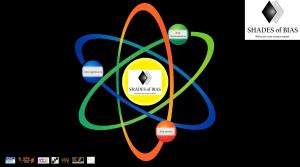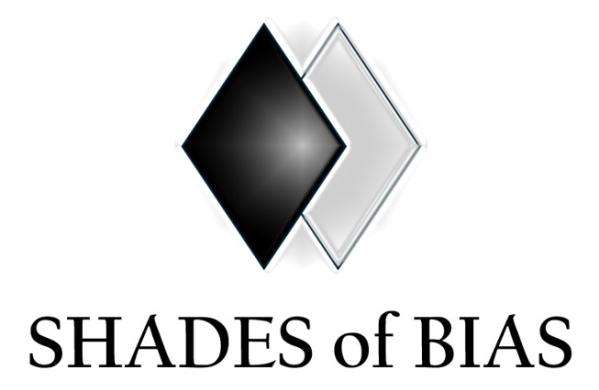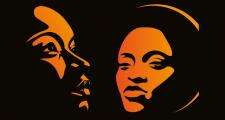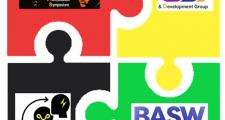Shades of Bias (SoB) is a versatile case study template designed to enable critical reflection on how discrimination, oppression and racism manifests in social work and beyond. It is a simple process for documenting, analysing and addressing instances of bias, whether it is experienced directly, observed or perpetrated (by the person/people responsible). SoB embraces intersectionality and is underpinned by the protected characteristics (age, race, disability, sexual orientation, religion etc) of the author (as per the Equality Act 2010).
Shades of Bias (SoB) serves three different groups;
A. Victims/survivors of discrimination/oppression/racism
Cathartic and therapeutic
For people who have experienced discrimination/oppression/racism, SoB offers a way to process and validate their experiences - reducing the fear of dismissal or gaslighting. It is imperative that victims/survivors of discrimination/oppression/racism access appropriate wellbeing networks (such as BASW England’s Mentoring Service, Professional Support Service, the Anti-Racist Movement or local peer support groups) and/or relevant wellbeing resources (such as: the Relational & Anti-racist supervision template, Eligibility for Advice and Representation Guidance, Professional working conditions & wellbeing campaign, the Black and Ethnic Minority Professionals Symposium (BPS) resources webpage and School of Shabs).
B. Witnesses and observers
Empowering ethical accountability
People who witness discrimination/oppression/racism often feel uncertain about how to intervene. SoB provides a proactive method to acknowledge and challenge effectively. Witnesses and observers can document incidents without putting themselves at risk, ensuring that discrimination/oppression/racism does not go unnoticed and/or become normalised. For many witnesses, speaking up against discrimination/oppression/racism can be intimidating or professionally risky. SoB provides a safe, structured way to record and report incidents, making systemic change more achievable.
C. Person/people responsible for the bias
A tool for accountability, critical reflection & growth
Even well-intentioned people can exhibit bias. SoB provides a logical, non-punitive method for people to reflect on their own actions, inactions and biases. People responsible for the bias are encouraged to analyse their decision-making and behaviours, recognising how instinctive and impulsive biases can influence professional judgment. By completing the template from their own perspective, people can confront how and why they perpetuated discrimination/oppression/racism and commit to learning and change. This process aims to convert guilt into being responsible and shame into taking accountability - cultivating a culture of growth rather than defensiveness.
Shades of Bias (SoB) has the following self-explanatory sections:
- Case study title
- Background and context
- Nature of the incident
- How was the situation handled?
- Reflection and learning
- Reflection and learning (for the person/people responsible for bias)
If social workers (victims/survivors/witnesses/people responsible) would like to share their completed case study with BASW England for collation and potential (anonymous) publication in the future, you can fill out the case study template via MS Forms here: https://forms.office.com/e/0aYt6pFMH2
BLOGS
- Professional Social Work magazine | Was that racism? And what should I do about it?
- Forward Assist | Adopting a Shades of Bias Approach: Addressing Disadvantage and Discrimination in UK Military Sexual Trauma Veterans
- Social Work Today | “Was that racism?”: New toolkit launched to process racism and bias in social work
- Community Care | Shades of Bias: a new approach to tackling discrimination in the social work workplace

We Want to Hear from You: Shades of Bias user survey
Have you used the Shades of Bias framework to reflect on racism, discrimination or bias? We’re inviting users to share their experiences by completing a short, anonymous survey. Your feedback will help shape how SoB evolves and how it’s used across social work practice, education and leadership. Your voice matters – whether you used Shades of Bias personally and/or professionally.
Complete the survey here: https://forms.office.com/e/GUekX2Y5tH
RESOURCES
Brief guidance
Detailed guidance
PDF template
Exemplar 1 - Covert racism in team meeting
Exemplar 2 - Witness/observer - Unconscious bias in performance evaluation
Exemplar 3 - Neurodivergence discrimination
Exemplar 4 - Person responsible for bias in recruitment
PowerPoint presentation
Infographic 1
Infographic 2
Promotional materials
FOCUS GROUPS
Irish Association of Social Workers focus group on Shades of Bias
Bournemouth, Christchurch and Poole (BCP) Council focus group
Alcohol and Drug Service (ADS Hull) focus group
Somerset Council focus group
Gateshead Council focus group



